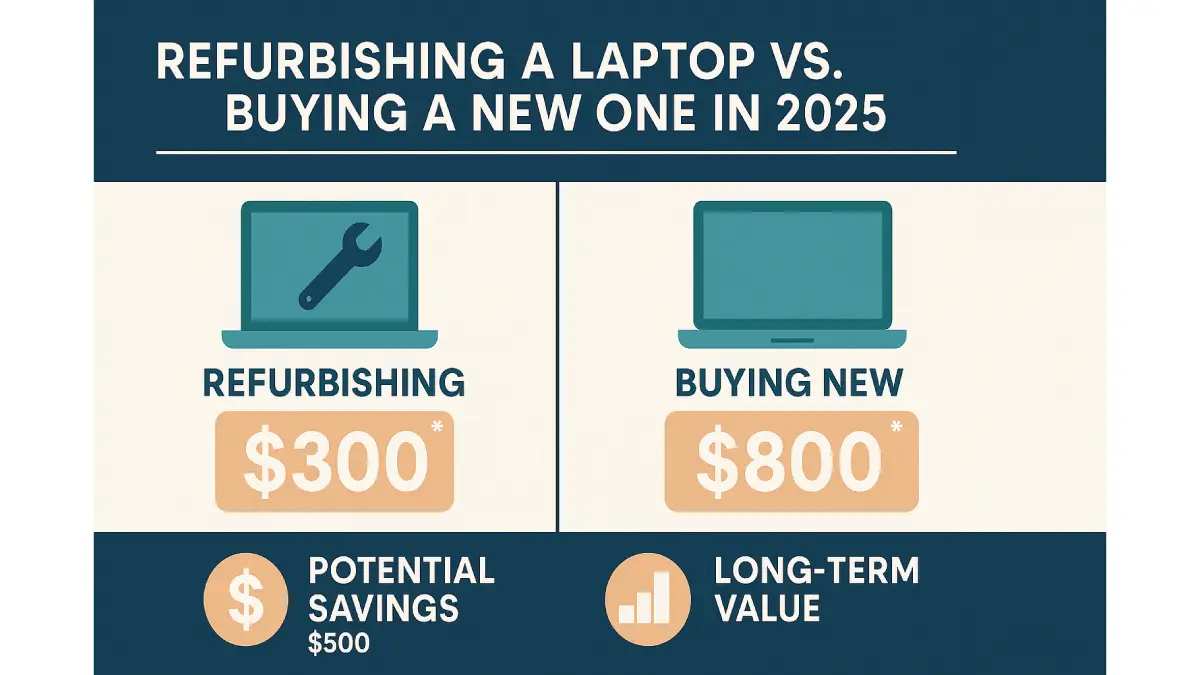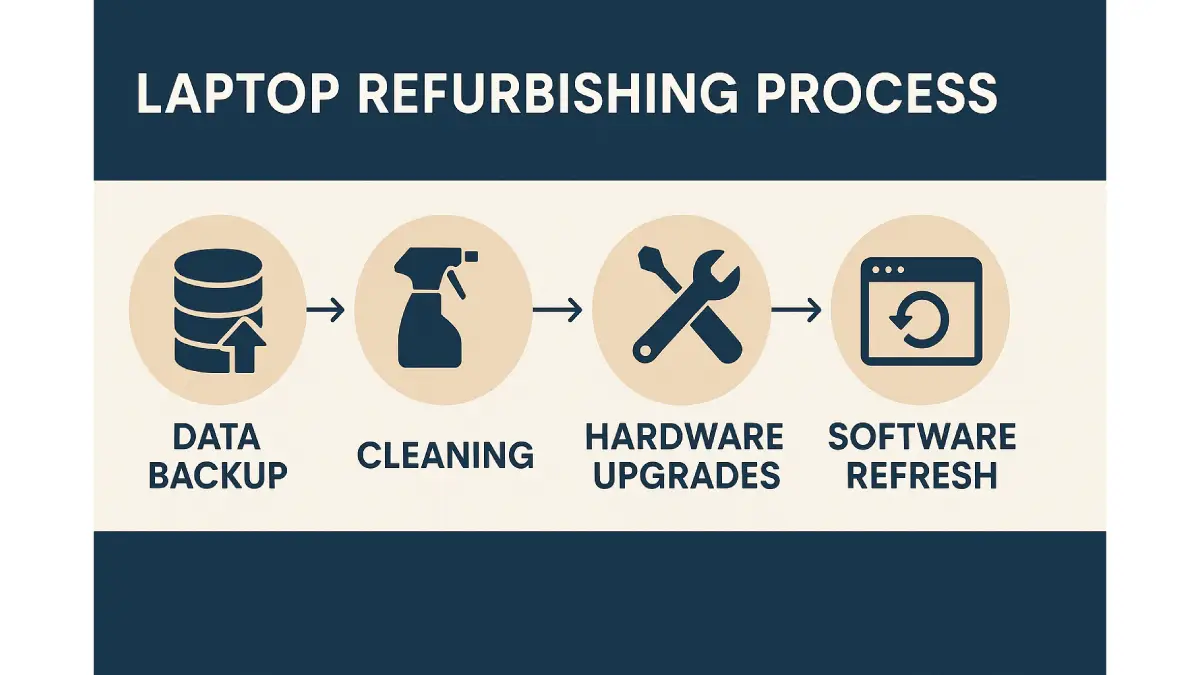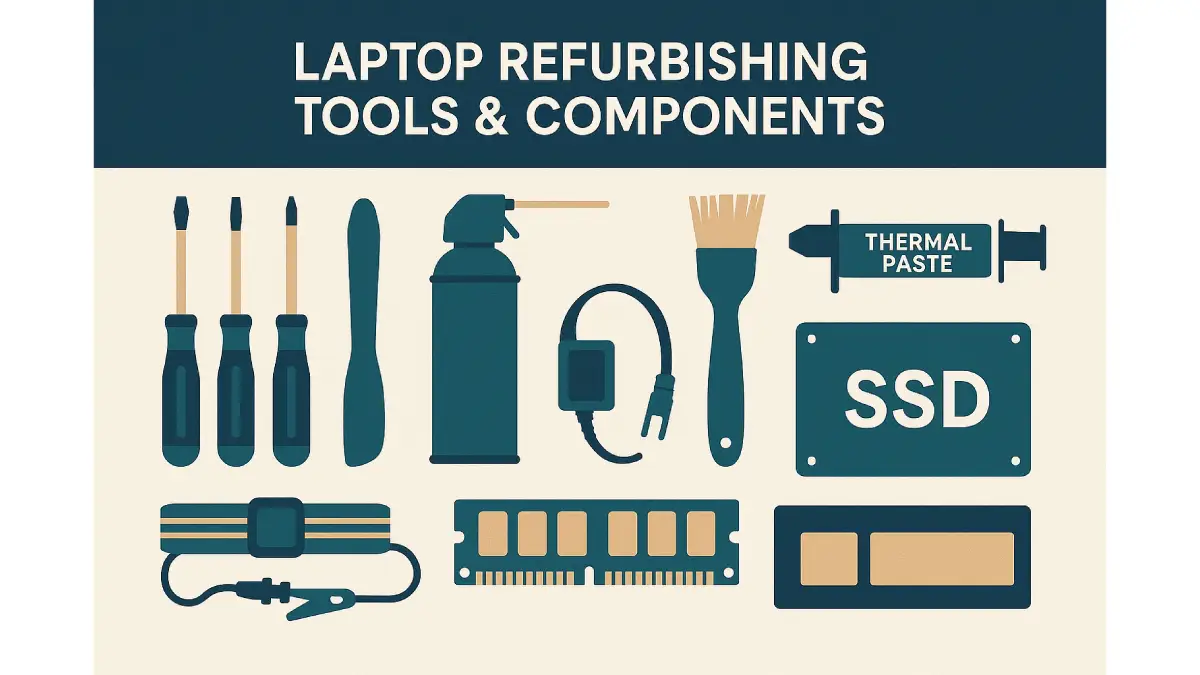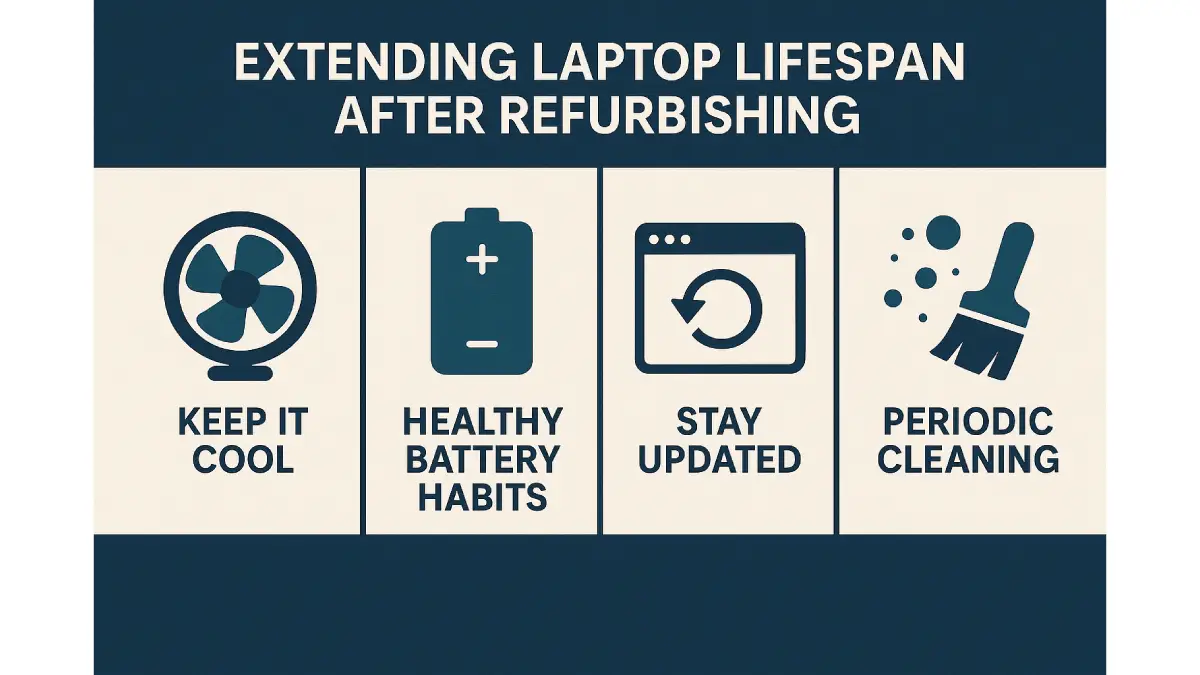
Laptop refurbishing is the process of breathing new life into an aging laptop through careful cleaning, repair, and upgrades. In other words, instead of discarding your slow or outdated laptop, you can refurbish it to restore performance and extend its useful lifespan. This approach not only saves you money but also reduces electronic waste. At Esmond Service Centre, our experienced technicians have years of experience refurbishing laptops for customers, so we understand what it takes to make a used laptop feel like new again. In this comprehensive guide, we’ll share professional insights and practical steps on laptop refurbishing. Read on to learn why refurbishing is a smart choice, how to do it correctly, and tips to keep your laptop running like new.
Refurbishing a laptop offers several benefits that make it an attractive option versus buying a brand-new machine. Here’s why laptop refurbishing is often the smarter choice:
Cost Savings: Upgrading and fixing your current laptop is far more budget-friendly than purchasing a new one. By refurbishing, you can improve your laptop’s speed and capabilities at a fraction of the cost of a replacement.
Environmental Benefits: Laptop refurbishing is eco-friendly. Reusing your device and updating its components means one less piece of electronic waste. This helps reduce the environmental impact associated with manufacturing and disposing of electronics.
Restored Performance: A thorough refurbish can make your laptop run significantly faster and more reliably. Cleaning out dust and swapping an old hard drive for a speedy SSD or adding more RAM can boost performance to feel like a new machine.

Successful laptop refurbishing involves a few key steps. Follow these steps to get the best results:
Backup Data & Inspect: Before making any changes, back up your important files. Then evaluate your laptop’s condition and identify what needs attention (e.g., slow performance, overheating, short battery life, etc.). This preparation ensures you know which refurbishing actions to take and safeguards your data.
Deep Clean the Laptop: Give your laptop a thorough cleaning inside and out. Use a microfiber cloth with a bit of isopropyl alcohol to wipe the exterior (keyboard, case, and screen gently). Then open the bottom panel and carefully blow dust out of the fans and vents with compressed air. If you’re comfortable, also replace the old thermal paste on the CPU/GPU to improve cooling.
Replace or Upgrade Hardware: Address any worn-out components and consider beneficial upgrades. For example, if the battery no longer holds a charge, replace it with a new one. You can also give the laptop a big performance boost by adding more RAM or swapping in a Solid-State Drive (if it doesn’t already have one). Make sure any new parts are compatible with your laptop model. By refreshing the hardware, you fix existing issues and extend the device’s capabilities.
Reinstall OS & Update Software: Finally, set up a fresh software environment. Reinstall your operating system (or reset it) to get rid of clutter and malware that accumulated over the years. After a fresh OS install, update it to the latest version and install all necessary drivers. Restore your backed-up files and install your essential apps. With a clean OS and updated software, your refurbished laptop will run as smoothly as possible.

Even with a solid plan, certain mistakes can undermine your laptop refurbishing efforts. Avoid these common pitfalls:
Skipping the Backup: Failing to back up data before refurbishing can lead to irreversible loss. Always save important files to an external drive or cloud storage beforehand.
Ignoring Static Precautions: Static electricity can damage sensitive components. Avoid working on carpet and consider wearing an anti-static wrist strap. At minimum, touch a metal surface frequently to discharge static before handling internal parts.
Using Improper Tools or Rushing: Using the wrong screwdriver or prying tool can strip screws or crack the case. Likewise, rushing the disassembly/reassembly might cause you to damage a cable or cause you to miss a connection, so always use proper tools and take your time.
Incompatible or Low-Quality Parts: If you install new components, make sure they are compatible and high quality. The wrong type of RAM or a low-quality battery can lead to more issues. Always double-check specifications and buy from reputable sources.

For a smooth laptop refurbishing process, gather the right tools and parts before you begin:
Precision screwdrivers & pry tools: For removing laptop screws and opening the case safely.
Cleaning supplies: A can of compressed air, a soft brush, isopropyl alcohol, and microfiber cloths to clean dust and grime.
Anti-static gear: An anti-static wrist strap (or anti-static mat) to prevent electrostatic discharge to delicate components.
Thermal paste: Fresh thermal compound for reapplying on the CPU/GPU if you’re cleaning the cooling system.
Replacement parts: Any components you plan to swap in, such as a new battery, extra RAM sticks, or an SSD. Ensure these parts are compatible with your laptop model.
OS reinstall media & backup drive: A USB installer for your operating system and an external drive for data backups.

After refurbishing, follow these expert tips to keep your laptop running well and extend its lifespan:
Keep it cool (and clean): Heat is a laptop’s enemy, so always allow good airflow. Use your laptop on hard surfaces (not on beds or carpets that block vents). Every few months, gently clean the vents and fans to prevent dust buildup.
Practice smart battery habits: To prolong battery health, avoid leaving the laptop plugged in at 100% all the time. Instead, unplug occasionally and let the charge cycle. If your laptop has an option to limit maximum charge (for example to 80%), use it. These good charging habits can add many extra recharge cycles to your battery’s life.
Stay updated and organized: Keep your operating system and drivers up to date for optimal efficiency and security. Run reliable antivirus scans to keep the system clean. Additionally, uninstall unnecessary programs and delete junk files periodically.
Refurbishing your laptop is a cost-effective and eco-friendly way to give your device a new lease on life. By following the steps above, you can postpone the need for a new purchase and keep your trusted machine running well for years. Remember, if any part of the process feels overwhelming, professional laptop refurbishing services are available to help. At Esmond Service Centre, our technicians can handle everything from deep cleaning to component replacements, ensuring the job is done right. Whether you choose the DIY route or opt for professional assistance, the goal is the same – to maximize the value and lifespan of your tech. We hope you found this guide helpful and informative. Feel free to share your own laptop refurbishing experiences or questions in the comments below, and let us know how your revitalized laptop is performing!
Enjoyed this comprehensive refurbishment breakdown? Follow our FaceBook page, Linkedin profile or Instagram account for more expert insights and practical tips on cutting-edge technology. If you’re inspired to refurbish your laptop like a pro but would like some guidance, reach out to the friendly team at Esmond Service Centre. Our professionals can answer your questions or even handle the entire refurbishment for you with genuine parts and expert care. We’re here to help you get the most from your laptop. Contact us today to get started!

Reviewed and originally published by Esmond Service Centre on June 1, 2024, updated on May 31, 2025.
Mon to Fri : 10:00am - 7:00pm
Sat : 10:00am - 3:00pm
Closed on Sunday and PH